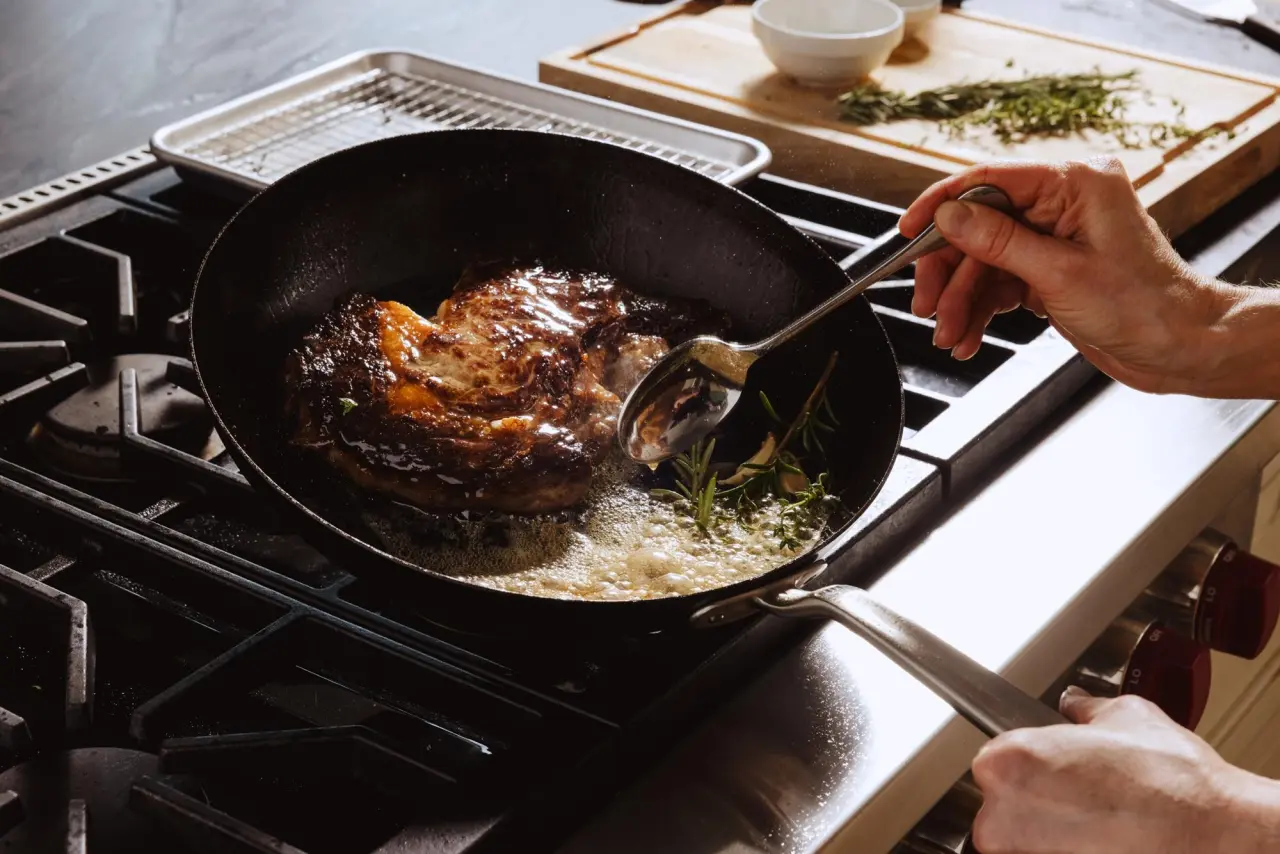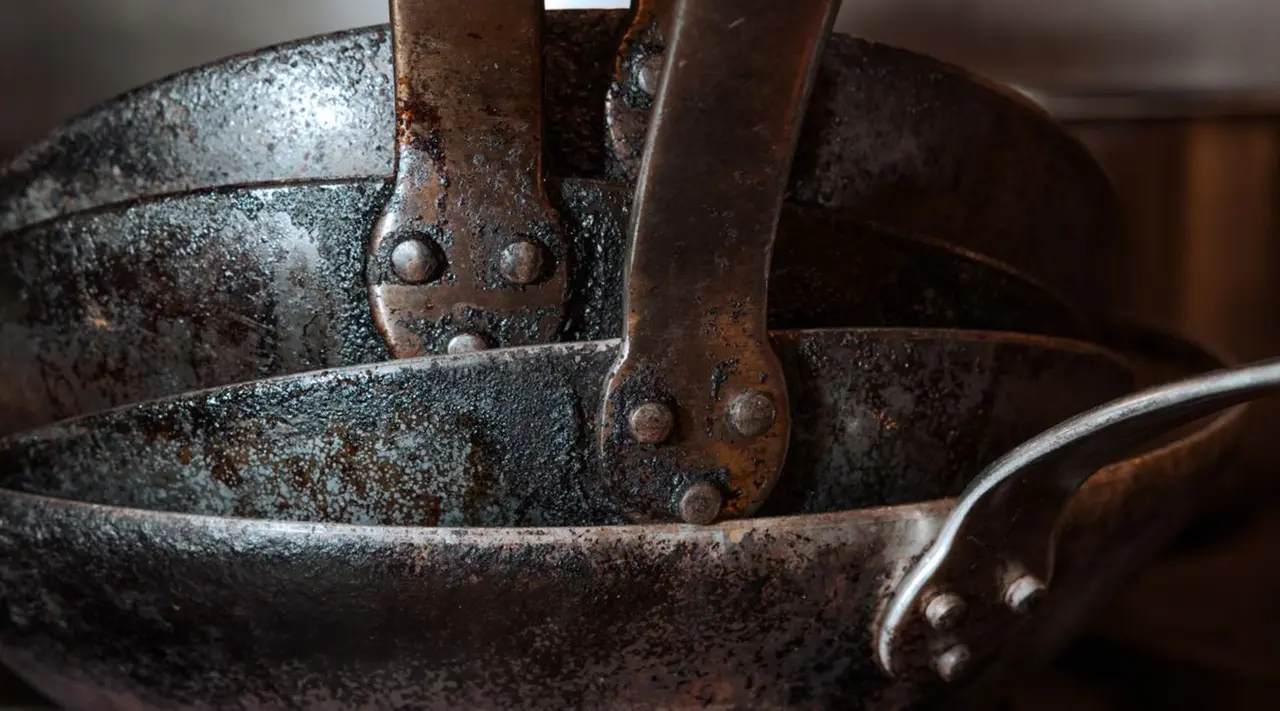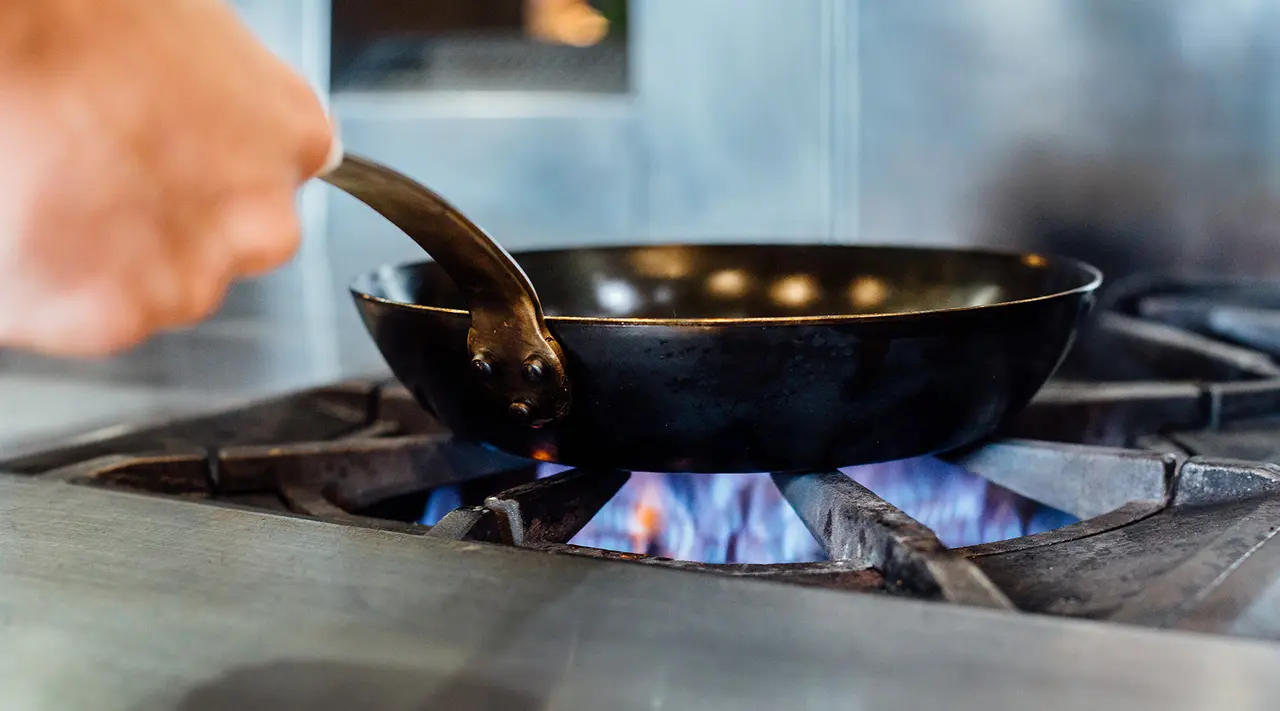Carbon Steel Griddles provide nearly infinite cooking possibilities, from breakfast pancakes and eggs to ribeyes over the open flame of a crackling campire. To keep your griddle in its best possible shape, performing well use after use, you need to keep it clean.
While there are many types of griddles out there, today we’re focusing on how to clean a carbon steel griddle. Carbon steel cookware comes with its own set of cleaning and maintenance guidelines, all of which can also be applied to our Carbon Steel Griddle. To get more granular, below is a step-by-step, foolproof guide to cleaning and maintaining our Griddle.
Why Proper Griddle Cleaning Matters
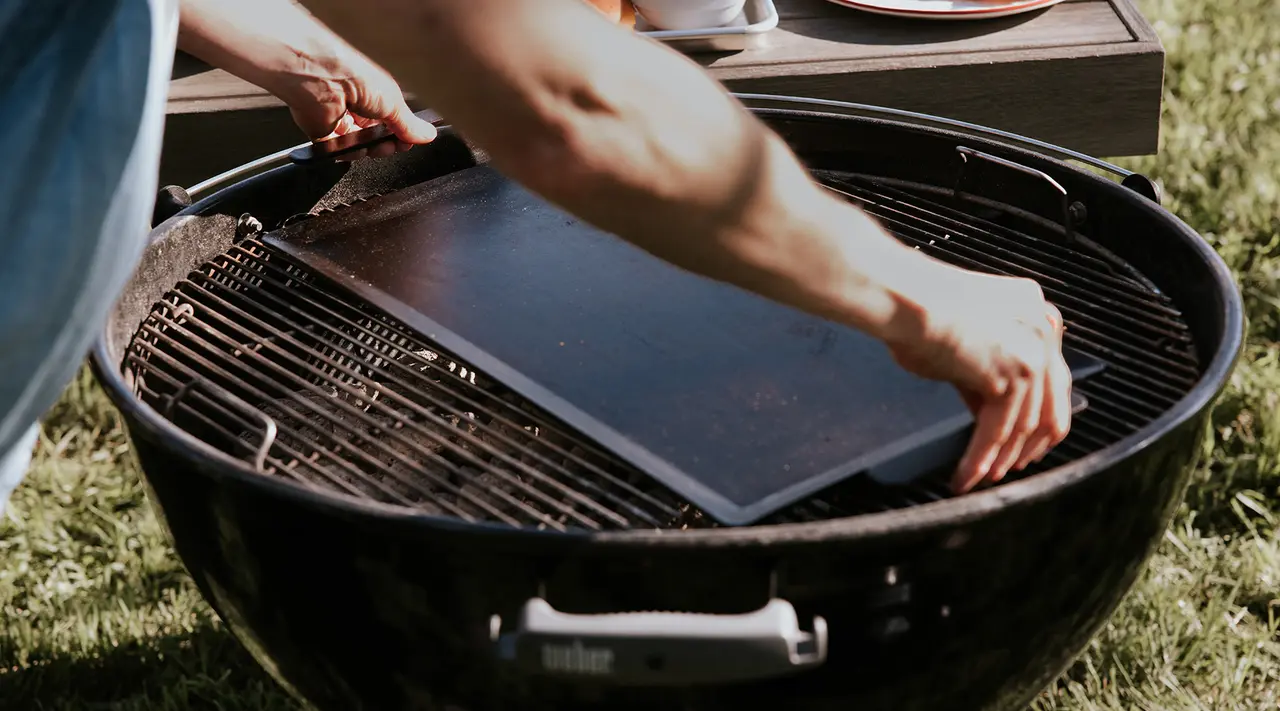
Why should you learn the ins and outs of griddle maintenance? Most importantly, you’re extending the lifespan of your griddle. Carbon steel may be nearly indestructible, but it still requires a few specific tasks to keep it performing year after year. Another reason to keep your griddle clean: a dirty cooking surface can lead to off flavors.
Knowing how to clean a griddle also helps with maintaining the surface’s seasoning, which in turn prevents rust. You’ll have a better cooking experience if the griddle’s seasoning remains intact, since seasoning renders the surface naturally non stick. Cleaning up becomes easier, too, when the griddle’s seasoning prevents stuck-on messes.
How to Clean a Griddle: Step-by-Step Guide
Why is my griddle’s surface splotchy and discolored? How do I set up my griddle for dual zone cooking? To answer those questions and more, watch our video on cooking with and cleaning our Carbon Steel Griddle.
Cleaning After Each Use
You’ll need a few basic tools to clean and maintain your Carbon Steel Griddle. (This applies to other types of carbon steel cookware, too.) Grab a bench scraper or spatula, paper towels or a clean cloth, a Carbon Cleaning Kit if you have one, and a small amount of a neutral, high smoke point oil, such as grapeseed.
Step 1: When you’re done cooking, let the griddle cool slightly so it’s not blistering hot, but try to clean it while it’s still a little warm. It’s easier to remove food residue from a slightly warm surface rather than a cold one.
Step 2: Use your scraper to remove stuck-on food. Don’t get so aggressive that you scratch the surface, especially if you’re using a metal bench scraper or spatula. A silicone or wooden spatula work well, as do small plastic bowl scrapers.
Step 3: Wipe down the griddle’s surface with a damp paper towel or cloth. If there’s a lot of residue left on the surface, plop it in the sink and use the sink hose to spray off the debris. You can also use the abrasive side of a sponge or a metal scrubber to scrub away any remaining food or oil residue, but avoid soap and other harsh detergents, which can strip the seasoning.
Step 4: If a piece of food isn’t coming off, return the griddle to the stove and pour a small amount of hot water on the tough spots. Bring it to a boil, then scrape it off as it boils.
Step 5: Once your griddle is clean, dry it thoroughly with a clean towel, then set the griddle over low heat for a minute or so until it’s completely dry. Apply a thin layer of oil, buffing it into the surface with a towel, to maintain the seasoning.
Deep Cleaning for Stubborn Residue
Sometimes you’ll have really stubborn residue that won’t come off following the above steps. When that happens, reach for kosher or other coarse salt, oil, and paper towels or a cloth.
Step 1: Heat the griddle slightly, then turn off the heat.
Step 2: Sprinkle a tablespoon or two of kosher salt onto the cooking surface. Use a paper towel or cloth to scrub away the residue. Salt is coarse enough to be helpful but not so abrasive that it will hurt the seasoning. If you notice any chipping in the seasoning, though, you can always reseason the griddle when you’re done.
Step 3: Move the griddle to the sink and wipe out any lingering salt and oil from the surface. Rinse or wipe with a damp cloth if needed, then dry with a clean towel.
Step 4: Set your clean griddle over low heat to ensure it’s fully dry. Pour a small amount of oil on the surface and buff it in with a towel. Lightly oiling the cooking surface after each use helps protect it from rust.
How to Remove Rust from a Griddle
Speaking of rust, it happens—especially if you live in a high humidity environment, or if your griddle is exposed to moisture for too long. If you find yourself with a rusty spot, do not panic. Your griddle is far from ruined.
Gather steel wool or fine-grit sandpaper, clean towel, white vinegar (optional), and your high smoke point oil of choice.
Step 1: Scrub the rusted area with steel wool or sandpaper. Seasoning will come off at this point, and that’s ok. You will reseason it later. If your gritty scrubbing mechanism isn’t removing rust, then you can apply a small amount of white vinegar to the surface. The acid in vinegar will definitely strip your seasoning, which, again, is ok—provided you follow up with a reseasoning.
Step 2: Wipe away rust particles with a clean towel. You can also wash the surface with soapy water now, since you aren’t preserving the seasoning any longer.
Step 3: Now reseason: apply a small amount of neutral, high smoke point oil and buff the oil all over the surface with a clean towel or paper towels. Make sure not to use too much oil (a quarter-sized amount is typically more than enough), and to really rub the oil into the pan. Heat the griddle over low heat, then gradually increase the heat to medium-high. Once the oil starts smoking, leave the griddle over the burners for two minutes. You’ll see the surface darken—that’s your seasoning. Let the pan cool completely before storing.
What Not to Do When Cleaning a Griddle
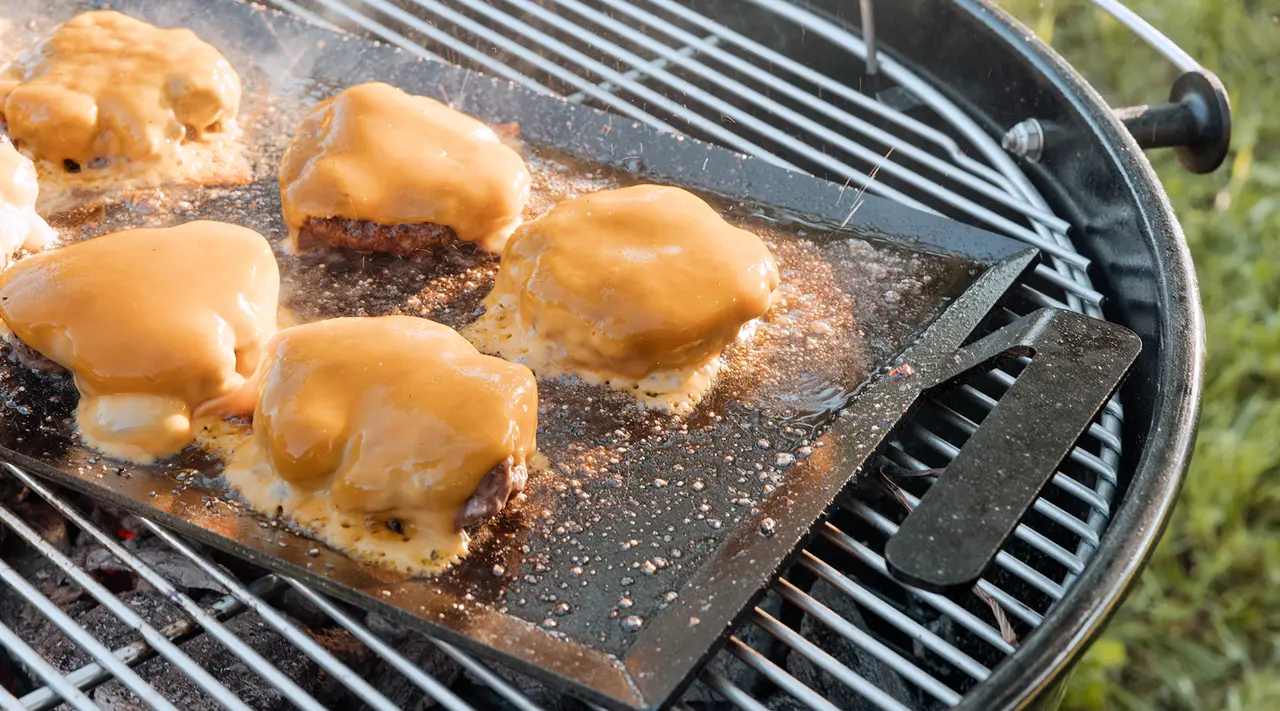
Avoid Soap and Dish Detergents
Harsh detergents can strip the seasoning of your griddle. Instead, use a little warm water and a clean cloth or sponge to wipe away any food residue.
Never Soak Your Griddle in Water
Moisture is the enemy of carbon steel, since it has such a high iron content. If you have something stuck on your griddle, it’s better to try the methods above than to soak it. At the very least, you’ll avoid having to remove rust and reseason the entire surface.
Don't Use Harsh Scouring Pads
Abrasive cleaning pads can also scrape and damage a griddle’s seasoning. It’s better to reach for a soft cloth or sponge. If there are bits of food stuck to the surface, use a bench scraper, spatula, or bowl scraper to carefully dislodge it.
How to Maintain Your Carbon Steel Griddle for Long-Term Use
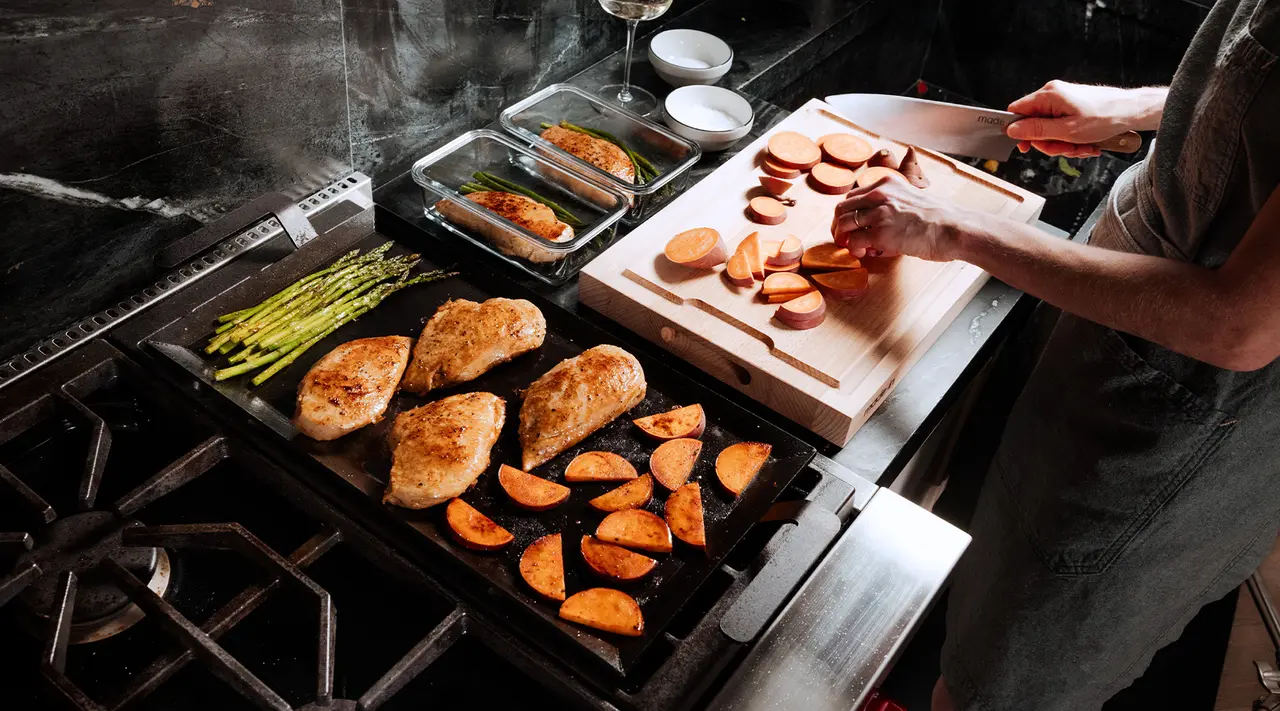
Regular Seasoning
Apply a thin coat of oil to the surface of your griddle after each use, buffing it in really well with a clean towel or paper towels. Oil protects the griddle from rust, helps keep the seasoning intact, and builds up even more of a naturally non stick surface.
Proper Storage
Store your griddle in a dry place to prevent rust. Even if you mainly use your griddle outside, never store it there (unless it’s in a Griddle Utility Bag) because you never know what elements will land on it outdoors. If you don’t have room to store it in a cupboard, you can always keep it right on your stove (something our employees are big proponents of)—just be sure to watch for splashes and splatters from other cooking projects.
Periodic Deep Cleaning
If buildup occurs, use the salt scrub method to restore your griddle to a clean, smooth surface. And remember to always reseason after deep cleaning.
Ready to Cook?
Now that you know how to clean a griddle, you’re ready to make a batch of smash burgers or a big batch of griddled veggies over a fire. Check out the Carbon Steel Griddle and get ready, because griddle season is upon us.




